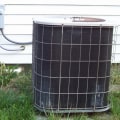For air conditioning applications, it is recommended to use new L-type or ACR tubes that have been cleaned by the manufacturer and capped at both ends. The piping system is constructed by soldering copper tubes and connections. The most commonly used HVAC pipe is made of copper, which is widely used in both cooling and heating systems. Recently, however, PEX tubing is replacing copper tubing in hot and cold water applications.
For most mechanics and refrigeration technicians, ACR copper tubing is the only piping material found. Industrial and ammonia mechanics are familiar with carbon and stainless steel, since ammonia reacts with copper, making it an unsuitable material for use. As CO2 systems become increasingly popular and our industry continues to recognize the seriousness of leaks, from an environmental perspective with halocarbons and from a safety perspective with ammonia, it is becoming increasingly important to reduce breakdowns. When it comes to air conditioning repair, there are certain requirements for refrigerant pipes, insulation, mechanical fastening, and allowable distances that must be met in order to ensure proper functioning of the system. If there is no table of distances and pipe diameters for a specific air conditioning system, the manufacturer will expect the installer to make some measurements on the system and adjust it accordingly.
This article on air conditioning describes the errors in air conditioning refrigerant pipe installations that may result in future refrigerant leaks or refrigeration equipment malfunction. It's important to note that in many (if not all) of Canada's jurisdictions, CSA B52 is not a legal requirement for small systems, generally less than three tons, and while it can be used for residential type equipment, its scope specifically excludes single-system air conditioning for private homes. While most common air conditioning applications have an evaporator for each circuit, it is possible to connect multiple evaporators to a single cooling circuit. In conclusion, when it comes to air conditioning systems, it is essential to use the right type of piping material in order to guarantee proper functioning of the system. Copper tubing is the most commonly used HVAC pipe for air conditioning applications due to its durability and resistance to corrosion. However, PEX tubing is also becoming increasingly popular in hot and cold water applications. It's also important to remember that CSA B52 may not be a legal requirement for small systems in Canada.


